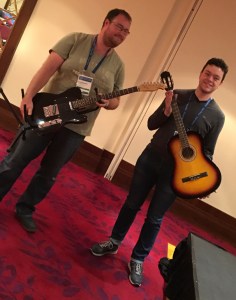As with many stories, if you have something to tell, it quickly takes up a lot of space. Therefore this will be a series of blog posts on Postgres and a bit of Oracle. It will be a short series, though…
Let’s begin
History
After switching to a more novel system, we adopted DEC (Digital Equipment Corporation) VAX, VMS and Micro VAX systems! Arguably still the best operating system around… In any case, it brought us the ability to run, the only valid alternative for a database around, Oracle. With a shining Oracle version 6.2 soon to be replaced by version 7.3.4. Okay, truth be told, at that time I wasn’t really that deep into databases, so much of the significance was added later. My primary focus was on getting the job done, serving the business in making people better. Still working with SQL and analyzing data soon became one of my hobbies.
Some rain must fall
More recently
This disconnect was the first one. Moving forward I noticed and felt more and more of a disconnect between Oracle and, what I like to call, core technology. Call me what you will, I feel that if you want to bring a database to the market and want to stay on top of your game, your focus needs to be at least seriously fixed on that database.
Instead we saw ever more focus for “non-core” technology. Oracle Fusion, Oracle Applications (okay, Oracle Apps had been there always), and as time progressed, the dilution became ever greater. I grew more and more in the belief that Oracle didn’t want to be that Database Company anymore (which proved to be true in the), but it was tough for me to believe. Here I was, having spent most of my active career focused on this technology, and now it was derailing (as it felt to me).
We saw those final things, with the elimination of Oracle Standard Edition One, basically forcing an entire contingent of their customers either out (too expensive) or up (invest in Oracle Standard Edition Two, and deal with more cost for less functionality). What appeared to be a good thing, ended up leaving a bad taste in the mouth.
And, of course… the Oracle Cloud, I am not even going to discuss that in this blog post, sorry.
The switch to Postgres
For me the switch was in two stages. First, there was this situation that I was looking for something to do… I had completed my challenge and, through a good friend, ran into the kind people of EnterpriseDB. A company I only had little knowledge of doing stuff for PostgreSQL (or Postgres if you like, please, no Postgré or things alike please, find more about the project here), a database I had not so much more knowledge of. But, their challenge was very interesting! Grow and show Postgres and the good things it brings to the market.
Before I knew it, I was studying Postgres and all the things that Postgres brings. Which was easy enough in the end, as the internal workings and structures of Postgres and Oracle do not differ that much. I decided to do a presentation on the differences between Postgres and Oracle in Riga. I was kindly accepted by the committee even when I told them, my original submission had changed!
A very good experience, even today, but with an unaccepted consequence. -> The second part of the switch was Oracle’s decision to cut me out of the Oracle ACE program.
It does free me up, somehow, to help database users across Europe, re-evaluate their Oracle buy-in and lock-in. Look at smarter and (much) more (cost)-effective ways to handle their database workloads. This finalized “the switch”, so to speak.
Meanwhile more and more people are realizing that there actually are valid alternatives to the Oracle database. After the adoption of the Oracle database as the only serious solution back in the early 1990’s, the world has changed, also for serious database applications!
End of Part I
Please follow this link to the second part of this blog post.
















